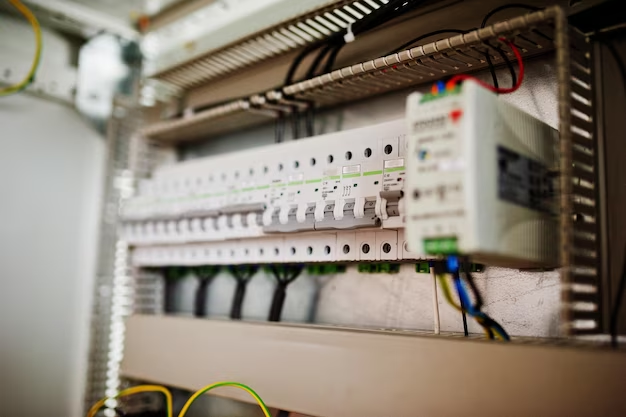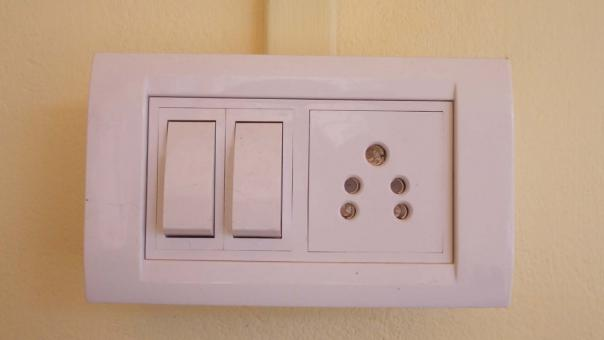Comments
- No comments found

Without a doubt, electricity is one of the most important inventions known to humanity.
It has revolutionized our way of life and continues to power modern society in countless ways. Everything from our homes, offices, transportation systems, and smartphones rely on electricity. But have you ever stopped to think about how this powerful energy source reaches us? That's where power supplies come in. They are crucial in converting raw electrical energy into usable forms for various devices and appliances. In this article, we'll explore the conversion between alternating current (AC) and direct current (DC) - two fundamental electric currents that power our daily lives. We'll delve into how power supplies work and their significance.

AC (Alternating Current) is the type of electric current that we commonly use in our homes, offices, and other everyday settings. As its name suggests, it alternates direction periodically, meaning it flows back and forth instead of in a straight line. This is due to how AC electricity is produced and transmitted through power grids, using generators that rotate at a constant speed to produce varying magnetic fields.
On the other hand, DC (Direct Current) flows only in one direction, making it ideal for powering small electronic devices like smartphones and laptops. Batteries or specialized power supplies typically produce this type of current. With a DC power supply, the current direction remains constant, providing a stable and reliable power source. The ability to convert between AC and DC has enabled us to harness electricity in more ways than ever before.
The use of these two currents has a rich history, with the War of Currents in the late 19th century being one of the most famous examples. It was a rivalry between Thomas Edison's DC distribution system and Nikola Tesla's AC system, where both men fought for dominance in powering cities across America.
Power supplies are electronic devices that convert one form of electrical energy into another. They take in the raw power from an outlet or a battery and transform it into a usable form for various appliances. Simply put, they act as intermediaries between the power source and the device that needs to be powered.

Rectification is the process of converting AC into DC, and it's a crucial step in power supply operation. Most devices require DC to operate, so the power supply's primary role is to convert the incoming AC into a stable DC output. This process is achieved through electronic components like diodes, capacitors, and transformers.
In contrast, an inverter converts DC electricity into AC. This is useful for devices that require both currents, such as solar panels and electric cars. Inverters use complex circuitry to alternate the direction of DC electricity, mimicking the characteristics of AC.
Power supplies are an essential part of any electronic device as they provide the necessary power needed for the device to function. Their importance must be balanced in telecommunications, computers, and manufacturing, where they are used extensively.
In computer systems, for instance, power supplies are responsible for converting AC from the wall socket into the set of DC voltages that the system requires. This conversion process is vital as most digital logic circuits and processors require a constant DC voltage to operate correctly.
In industrial settings, power supplies are used to control machinery and equipment. They are designed to resist overloads and power surges, keeping the machines safe from electrical damage. They can also be programmed to provide different amounts of power at other times, enabling more efficient electricity use.
In the telecommunications industry, power supplies provide the energy needed for signal transmission. This includes the power sent down telephone lines and used by cell towers to broadcast signals.
In recent years, there has been a growing focus on energy efficiency and renewable resources, leading to innovations in power supply technology. This includes advancements in design and materials, as well as smart controls and monitoring systems to optimize energy usage.
Furthermore, as society increasingly relies on renewable energy sources, power supplies will be crucial in converting these intermittent sources into reliable and usable electricity. This presents challenges and opportunities for power supply manufacturers, who must continually adapt to meet the demands of a changing energy landscape.
Power supplies are an essential part of our modern world, allowing us to harness the power of electricity in various forms. From AC to DC, these devices play a crucial role in converting electrical energy and powering our daily lives. As technology advances, we expect to see further developments in power supply technology, leading to more efficient and sustainable electricity use. So the next time you plug in your device or turn on your lights, remember power supplies' role in bringing electricity into our homes and powering our world.
Leave your comments
Post comment as a guest